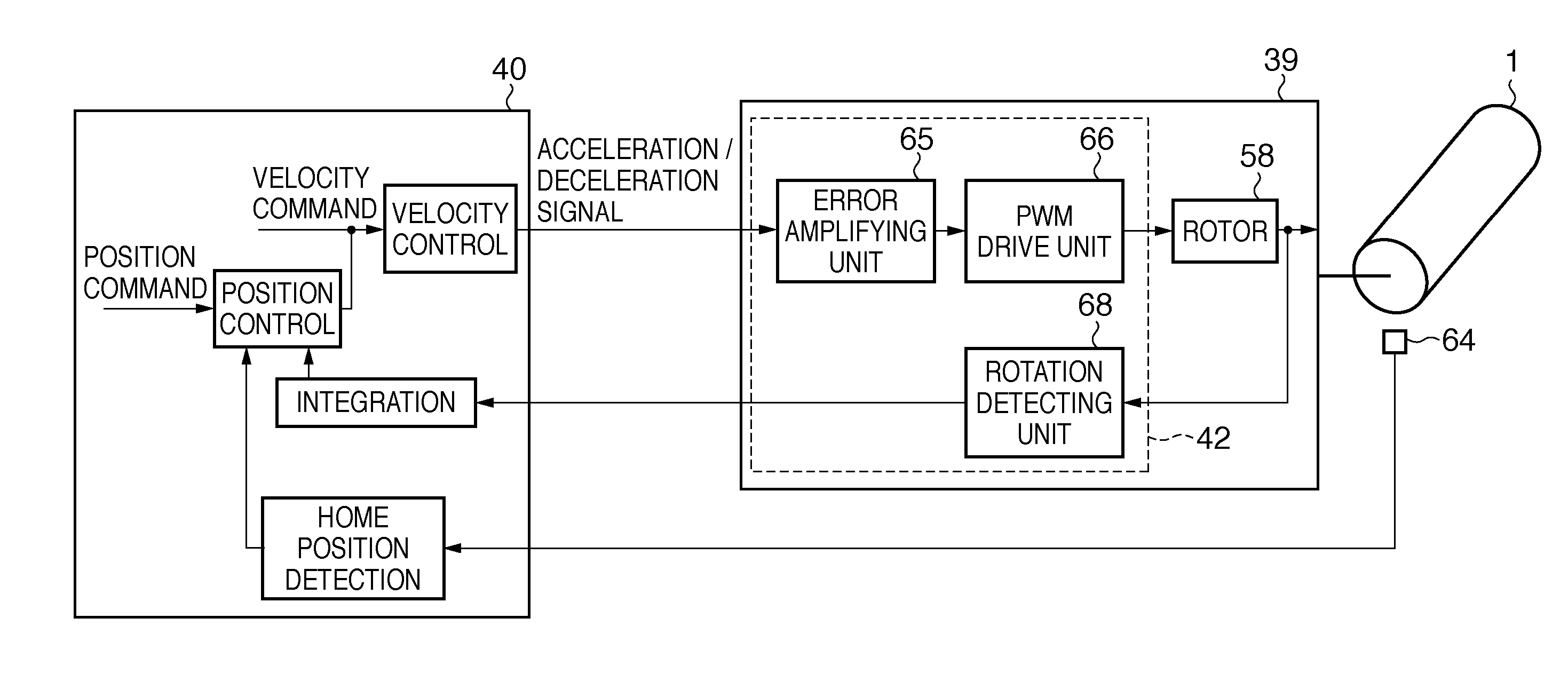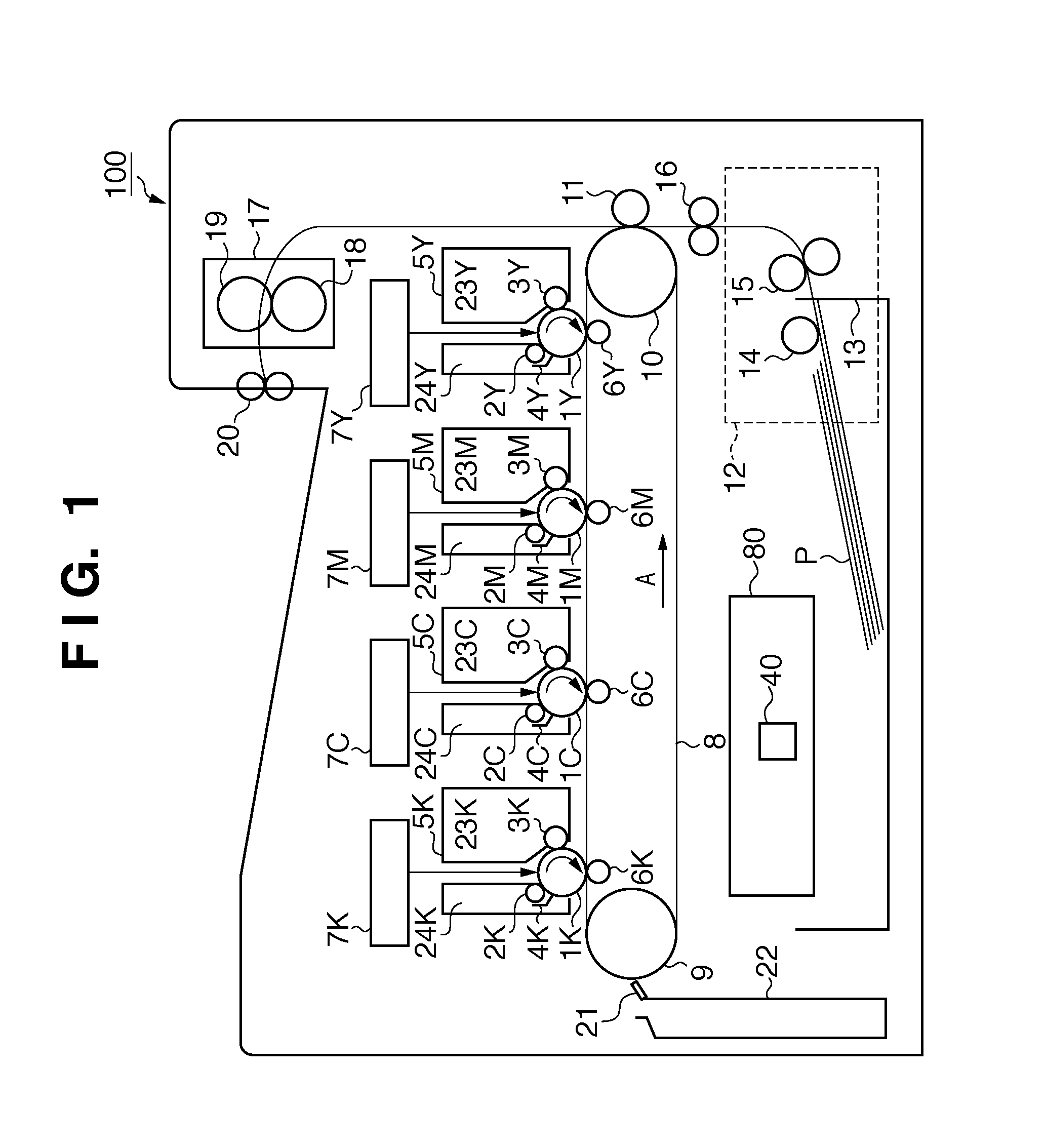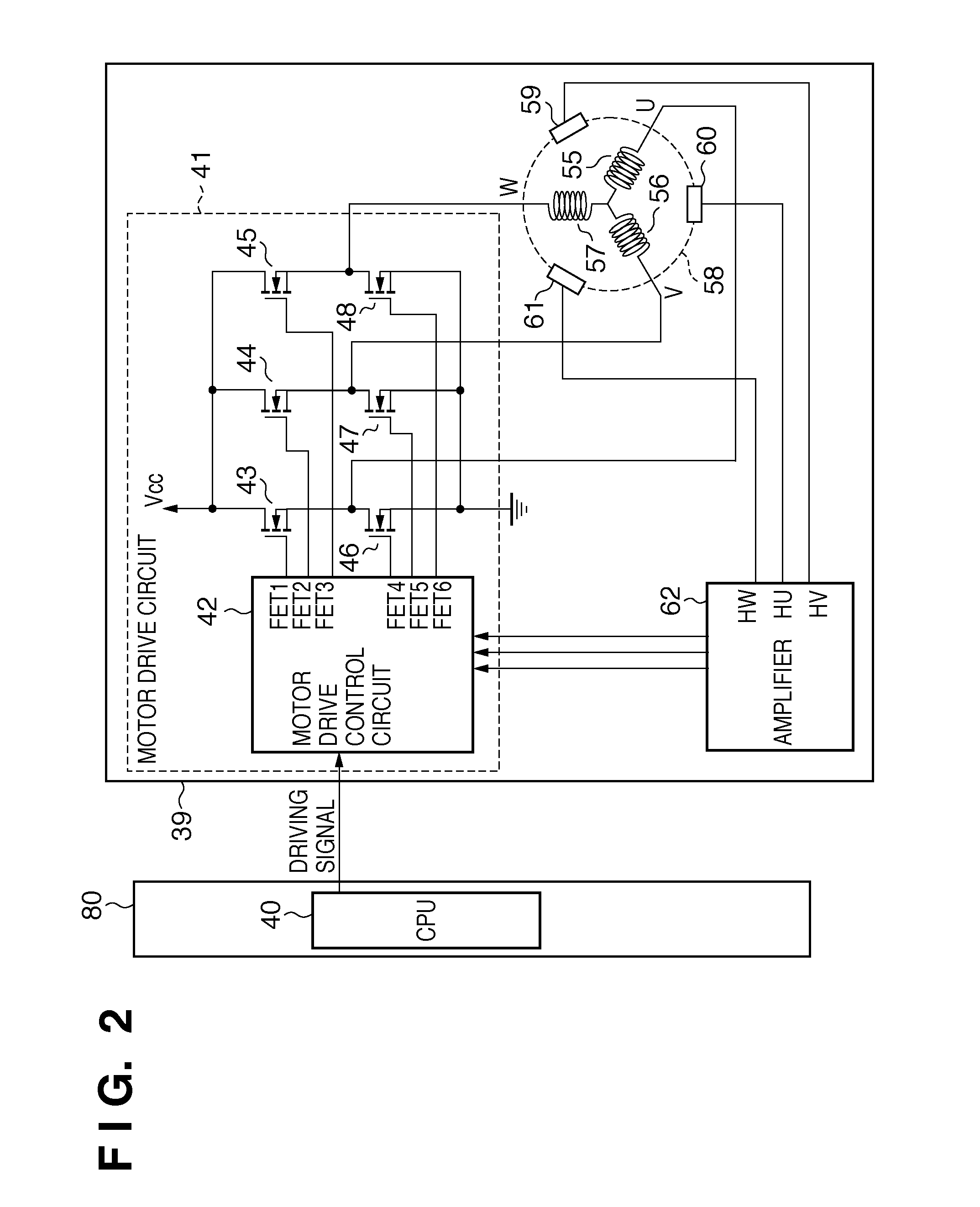Image forming apparatus provided with mechanism for cleaning image carrier
a technology of image carrier and forming apparatus, which is applied in the direction of electrographic process apparatus, instruments, optics, etc., can solve the problems of image blurring, streaks and image blurring, and streaks, so as to reduce image blurring, color misalignment, and streaks. , to achieve the effect of reducing phase difference, reducing streaks and image blurring, and increasing the first print-out tim
- Summary
- Abstract
- Description
- Claims
- Application Information
AI Technical Summary
Benefits of technology
Problems solved by technology
Method used
Image
Examples
embodiment 1
[0030]FIG. 1 is a schematic cross-sectional view of a multicolor image forming apparatus 100 (hereinafter referred to as a main body). YMCK given as the suffix of reference numerals in FIG. 1 denote the colors (yellow, magenta, cyan, and black) of toner, which is a developer. Below, YMCK is omitted when describing aspects in common with all the colors.
[0031]The image forming apparatus 100 is provided with four process cartridges 5 that are detachable from the main body. Although the basic structure of these four process cartridges 5 is the same, the difference thereof is to respectively form images with a different color of toner. Each of the process cartridges 5 has a toner container 23, a photosensitive drum 1 serving as an image carrier, a charging roller 2, a developing roller 3, a drum cleaning blade 4, and a waste toner container 24.
[0032]Laser units 7 are arranged above the process cartridges 5. The laser unit 7 exposes the corresponding photosensitive drum 1 based on an imag...
embodiment 2
[0063]In Embodiment 2, the amounts of rotation for stop instruction issuance Mt that will be applied from the first to (N−1)th intermittent drives are not corrected, and the amount of rotation for stop instruction issuance Mt that will be applied to the Nth final intermittent drive is corrected. Here, the amounts of rotation for stop instruction issuance applied from the first to (N−1)th intermittent drive are set to Mt(N−1). Note that the values of all of MT(1), MT(2), . . . , Mt(N−1) are the same. The target total amount of rotation from when the first intermittent drive starts until when the Nth intermittent drive ends is assumed to be Da. The total amount of rotation measured from when the first intermittent drive starts until when the (N−1)th intermittent drive ends is assumed to be Ca. The amount of rotation for stop instruction issuance applied to the Nth intermittent drive is assumed to be Mt(N). In Embodiment 2, the CPU 40 determines the amount of rotation for stop instruct...
embodiment 3
[0074]In Embodiment 3, a method for correcting the amounts of rotation for stop instruction issuance Mt for the first to (N−1)th drives is the same as in Embodiment 1. However, in Embodiment 3, a method for determining the amount of rotation for stop instruction issuance Mt(N) for the Nth drive is different. Specifically, the CPU 40 determines the amount of rotation for stop instruction issuance Mt(i) for the ith drive (i is a natural number of 2 or more and N−1 or less), based on the target amount of rotation D and the amount of inertial rotation Cl(i−1) due to the (i−1)th drive. The CPU 40 determines the target amount of rotation D(N) for the Nth drive based on the target total amount of rotation Da and the total amount of rotation Ca that has been measured from the start of the first intermittent drive until the end of the (N−1)th intermittent drive. Furthermore, the CPU 40 determines the amount of rotation for stop instruction issuance Mt(N) for the Nth drive, which is the drive...
PUM
 Login to View More
Login to View More Abstract
Description
Claims
Application Information
 Login to View More
Login to View More - R&D
- Intellectual Property
- Life Sciences
- Materials
- Tech Scout
- Unparalleled Data Quality
- Higher Quality Content
- 60% Fewer Hallucinations
Browse by: Latest US Patents, China's latest patents, Technical Efficacy Thesaurus, Application Domain, Technology Topic, Popular Technical Reports.
© 2025 PatSnap. All rights reserved.Legal|Privacy policy|Modern Slavery Act Transparency Statement|Sitemap|About US| Contact US: help@patsnap.com



